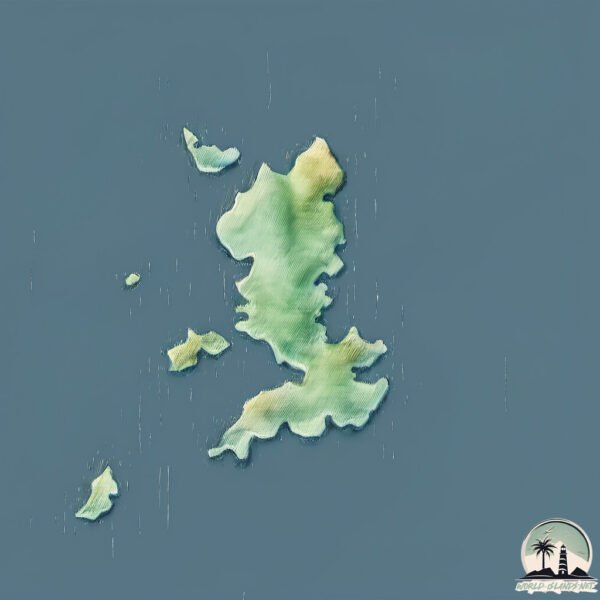Nisída Skántzoura

Welcome to Nisída Skántzoura, a Temperate island in the Aegean Sea, part of the majestic Atlantic Ocean. This guide offers a comprehensive overview of what makes Nisída Skántzoura unique – from its geography and climate to its population, infrastructure, and beyond. Dive into the details:
- Geography and Size: Explore the island’s size and location.
- Climate and Weather: Weather patterns and temperature.
- Topography and Nature: Uncover the natural wonders of the island.
- Infrastructure and Travelling: Insights on reaching, staying, and making the most of your visit.
- News and Headlines: Latest News.
Geography and size of Nisída Skántzoura
Size: 6.383 km²
Coastline: 20 km
Ocean: Atlantic Ocean
Sea: Aegean Sea
Continent: Europe
Nisída Skántzoura is a Small Island spanning 6.4 km² with a coastline of 20 km.
Archipel: –
Tectonic Plate: Aegean Sea – Located in the eastern Mediterranean, this microplate is characterized by seismic and volcanic activity due to its interaction with the Eurasian and African Plates.
The geographic heart of the island is pinpointed at these coordinates:
Latitude: 39.07968298 / Longitude: 24.11225641
Climate and weather of Nisída Skántzoura
Climate Zone: Temperate
Climate Details: Hot-Summer Mediterranean Climate
Temperature: Hot Summer
Climate Characteristics: Characterized by hot, dry summers and mild, wet winters, typical of coastal areas with abundant sunshine.
Topography and nature of Nisída Skántzoura
Timezone: UTC+02:00
Timezone places: Europe/Mariehamn
Max. Elevation: 64 m
Mean Elevation: 34 m
Vegetation: Evergreen Needleleaf Forest
Tree Coverage: 59%
The mean elevation is 34 m. The highest elevation on the island reaches approximately 64 meters above sea level. The island is characterized by Plains: Flat, low-lying lands characterized by a maximum elevation of up to 200 meters. On islands, plains are typically coastal lowlands or central flat areas.
Dominating Vegetation: Evergreen Needleleaf Forest
Dominated by evergreen coniferous trees such as pines and firs, which retain their needle-like leaves throughout the year. These forests are often found in cooler climates. Nisída Skántzoura has a tree cover of 59 %.
Vegetation: 5 vegetation zones – Highly Diverse Island
With five different vegetation zones, these islands offer a rich tapestry of ecosystems. The variety could include dense forests, open meadows, wetlands, coastal zones, and more. This level of diversity supports an intricate web of life, with each zone playing a vital role in the overall ecological health and balance of the island.
Infrastructure and Travelling to Nisída Skántzoura
Does the island have a public airport? no.
There is no public and scheduled airport on Nisída Skántzoura. The nearest airport is Skiros Airport, located 41 km away.
Does the island have a major port? no.
There are no major ports on Nisída Skántzoura. The closest major port is KYMASSI, approximately 74 km away.
The mean population of Nisída Skántzoura is 19 per km². Nisída Skántzoura is Gently Populated. The island belongs to Greece.
Continuing your journey, Nisí Peristéra is the next notable island, situated merely km away.
Greece is classified as Developed region: nonG7: Developed economies outside of the Group of Seven, characterized by high income and advanced economic structures. The level of income is High income: OECD.
News – Latest Updates and Headlines from Nisída Skántzoura
Stay informed with the most recent news and important headlines from Nisída Skántzoura. Here’s a roundup of the latest developments.
Please note: The data used here has been primarily extracted from satellite readings. Deviations from exact values may occur, particularly regarding the height of elevations and population density. Land area and coastline measurements refer to average values at mean high tide.
